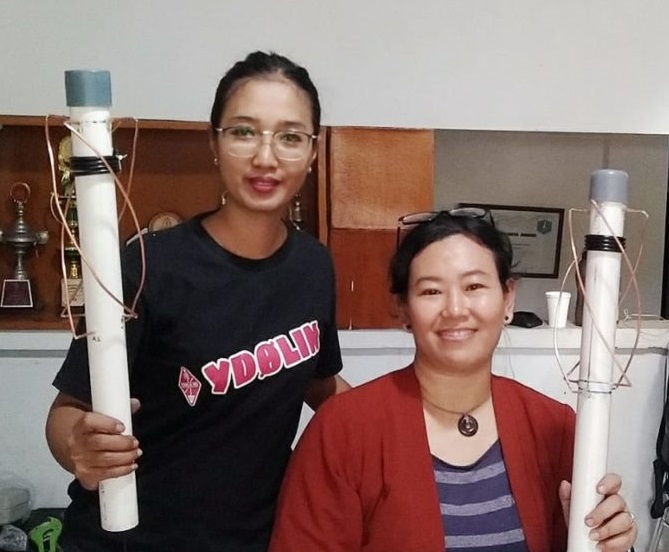Radio amateurs built Quadrifilar Helicoidal (QFH) satellite antennas at a workshop in Indonesia organised by a local branch of the national amateur radio society ORARI.
A translation of the ORARI website report reads:
On Saturday, February 22, 2020, South Jakarta Local ORARI Jakarta held a Homebase Antenna Workshop for LAPAN-A2 / LAPAN-ORARI (IO-86) Satellite Communications. The workshop was held at the Local ORARI Club Station in South Jakarta, with guest speaker Suryono Adisoemarta (Yono / YD0NXX).
The agenda of this workshop consists of theory and practice. Theoretical material includes the introduction of amateur radio satellites in general, the introduction of LAPAN-A2 / LAPAN-ORARI (IO-86) satellites and satellite tracking techniques. Whereas practical material includes making a Quadrifilar Helicoidal (QFH) antenna and communication with the LAPAN-A2 / LAPAN-ORARI (IO-86) satellite.
The workshop was opened at 9:20 by Irsan YC0OST as Deputy Chair of South Jakarta Local ORARI. After opening, the program continued with the giving of theories about amateur radio satellites. In addition to the IO-86 satellite, there are also other amateur radio satellites that can be used such as AO-7 as the longest-running amateur radio satellite, AO-91, AO-95 and QO-100 which is a geostationary amateur radio satellite.
After the theoretical material was finished around 11:30, the program continued with the practice material for making QFH antennas. The materials for making the antenna provided by the committee included copper capillary pipes, 1 1/4 PVC PVC pipe, RG-58 cable, BNC connector and paper clips. Meanwhile, the equipment for making antennas was carried by each participant, such as solder, scissors, pliers, drill, and others. The atmosphere became even more exciting, because in making this QFH antenna there were separate challenges, especially in the RG-58 cable connection to the antenna element.
At 14:00, LAPAN provided a dedicated Voice Repeater slot on the IO-86 satellite for workshop participants to try out the antenna they made. But because the antenna is quite complicated, there is no antenna that can be tried on the Voice Repeater schedule. Mahesa Rani YD0OVE’s antenna was first tried on the regular Voice Repeater schedule. The results are quite satisfying. With her capital Handy Transceiver (HT) and a hand-held QFH antenna, YD0OVE successfully received 14 amateur radio stations.
In this workshop, several guests were present including the President of AMSAT-ID Hakim YB0AN, Chair of the Central Jakarta Local ORARI Edy YCØEDY, and the South Jakarta Local ORARI DPP Beben YB0HJW and Fahlifi YF0BRR.
Source ORARI https://tinyurl.com/IndonesiaORARI

